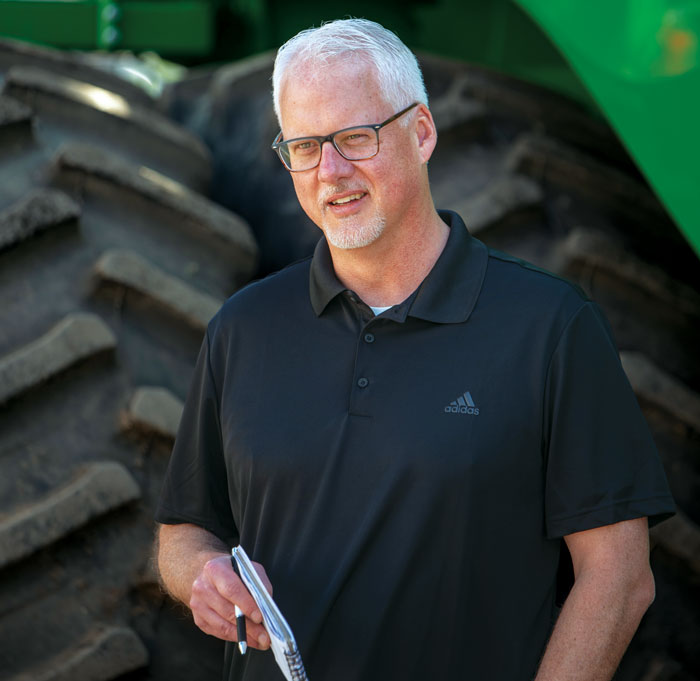Numerous no-till attempts were made in the late 1940s but unsuitable equipment and weed control products, still in their relative infancy, thwarted its adoption. The brief history of weed control advancements is a complement piece to “No-Till’s Herbicide History” appearing in the May 2022 No-Till Farmer.
1945
At the end of World War II, Dow releases 2,4-D to control broadleaf weeds, presenting the first real possibility of cultivating crops without tillage.
1955
After 2 years, production of the first commercial no-till planter, the McCormick M-21 (2-rows on 40-inch spacing) ceases due to the method’s inability to control weeds.
1955
The invention of the paraquat in the U.K. leads the Imperial Chemical Co. to initiate research into farming without tillage.
1958
Atrazine is registered in 1958 by Ciba-Geigy for weed control in corn. It will be used extensively in the U.S. by the early 1960s.
1961
Stauffer Chemical Co. patents glyphosate in 1961 as a descaling and metal chelating agent, unaware of its application to its ag division.
1962
Dicamba (first described in 1958 and patent acquired by Versicol Chemical) is approved for use in the U.S.
1964
Banvel herbicide (containing dicamba) is registered by the USDA.
1966
Chevron Chemical releases paraquat in the U.S. for use as a burndown herbicide.
1968
Monsanto's Lasso herbicide is credited with spurring a trend toward reduced-tillage farming.
1970
Monsanto chemist John E. Franz discovers glyphosate's weed-killing properties.
1974
Monsanto’s Roundup (glyphosate) is seen by attendees of No-Till Farmer’s Hawaii farm tour. The herbicide will dramatically combat weeds in no-till corn.
1974
BASF introduces Basagran to the U.S and no-till soybean expands. Later used in combination with other herbicides, it plays an important role in developing the no-till farming systems in the U.S. and Brazil.
1976
EPA approves Roundup for use in no-till and conventional-tillage systems.
1980
Many selective and non-selective herbicides compatible with no-till are produced between 1980 and 1985. Burndown herbicides experience market expansion.
1990
Within a year of the expiration of its initial patent, Monsanto cuts the price of Roundup. Better equipment, reduce herbicide cost and ag policy encouraging no-till converge leading to the largest increase ever in no-till. By the end of the decade, no-till grows from 6% of U.S. farmland to nearly 20%.
1992
2,4-D is approved for no-till soybeans after a 30-year wait.
1993
Glufosinate herbicide, first introduced in Japan 9 years earlier, is registered for use.
1996
Monsanto introduces Roundup Ready soybeans, spurring greater interest in reduced tillage. Roundup Ready corn is introduced in 1998.
2016
Dicamba is approved for post-emergence on three dicamba-tolerant soybeans and cotton.
2021
The Environmental Benefits of Precision Agriculture in the U.S. study (AEM, ASA, CropLife and TFI) reports that 15,000 tons of herbicide have been avoided due to adoption of precision ag technologies such as auto guidance, variable rate and section control.
2021
Herbicide use continue to fall. While 10 pounds of herbicide per acre were needed in the early 1960s, farmers are using mere ounces per acre in current no-till programs.
Historical Herbicide Facts
-
The adoption of herbicides was spurred by a desire to reduce weed control costs as labor became scarce and more expensive in the years after World War II, and as several Southern states experienced a net loss of 200,000 to 300,000 farm workers within a decade as they moved to cities.
-
In 1947, following 2,4-D's introduction, an additional 55.9 million pounds of corn were produced from 18,100 acres of bottomland in Kentucky as a result of 2,4-D spraying (Hanson 1947).
- Prior to herbicides, the need to cultivate corn led to very wide plant spaces to accommodate cultivation on all four sides of each plant. With the substitution of herbicides, the plants in corn fields could be planted closer together, which increased per-hectare fields. Average corn plant populations increased from 30,000 plants per hectare in the 1950s to 50,000 plants per hectare at the end of the 1970s.
- For corn and soybeans, researchers have statistically determined the contribution of herbicides to improved yields. Herbicides accounted for 20% of the increase in corn yields in 1964 through 1979 and 62% of the yield increased in soybean 1965 through 1979. For both crops, yields increased as herbicide use increased. (Schroder et al. 1981, 1984).
--The Value of Herbicides in U.S. Crop Production, Leonard P. Gianessi and Nathan P. Reigner, Weed Technology 2007.
For additional reading, see:
- “A Paraquat History Lesson”
- “No-Till’s Herbicide History, Part I”
- “No-Till’s Herbicide History, Part II”
- “John E. Franz & the Glyphosate Discovery”
The 2024 No-Till History Series is supported by Calmer Corn Heads. For more historical content, including video and multimedia, visit No-TillFarmer.com/HistorySeries.







